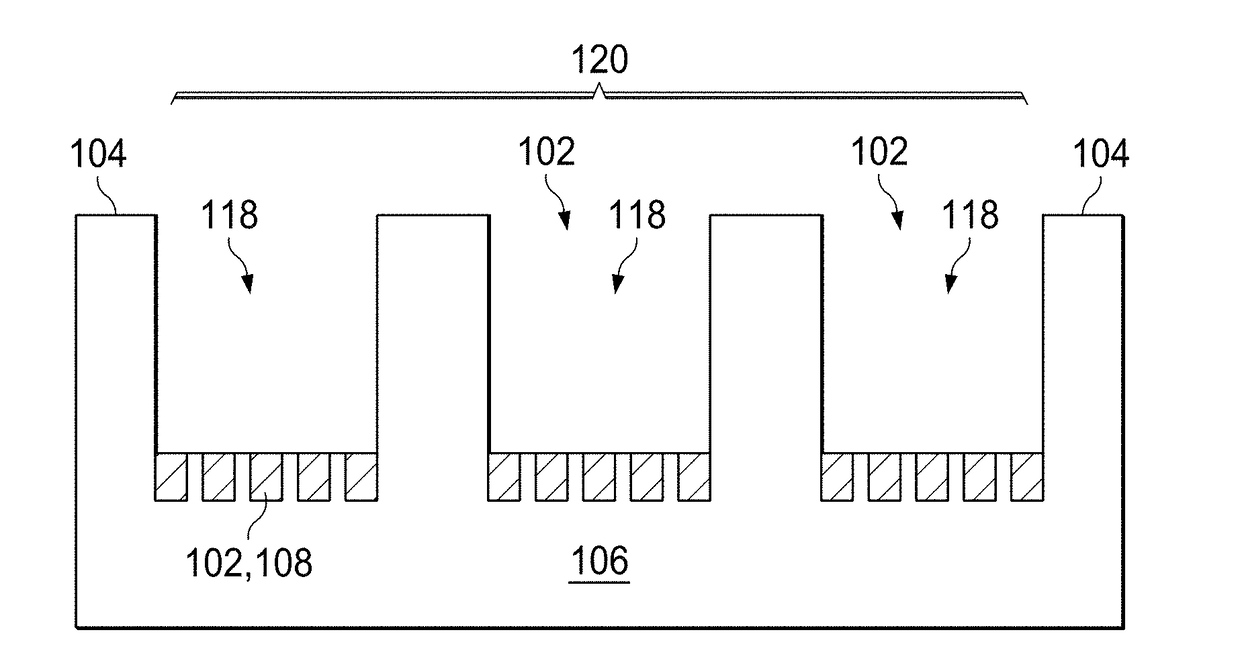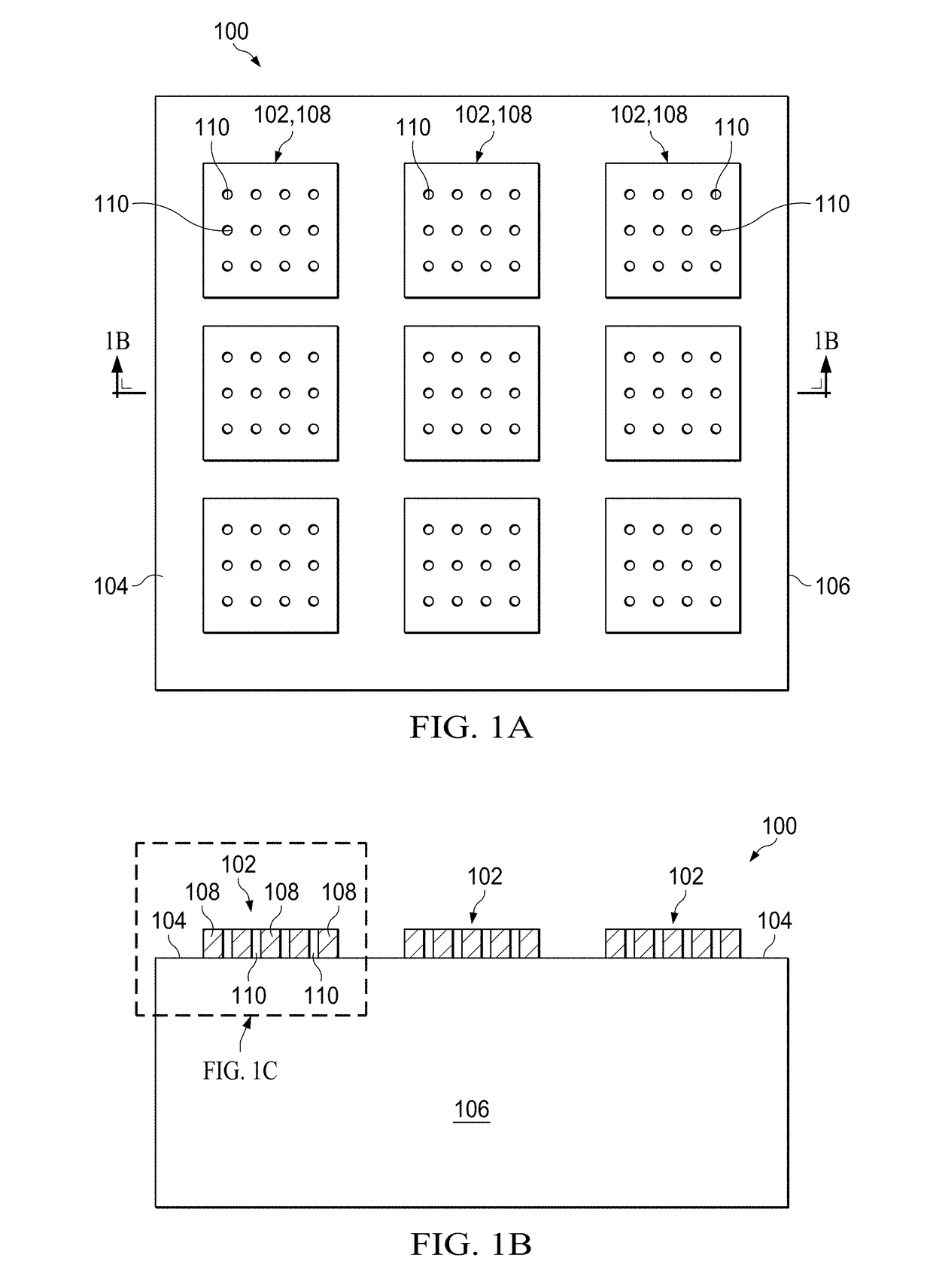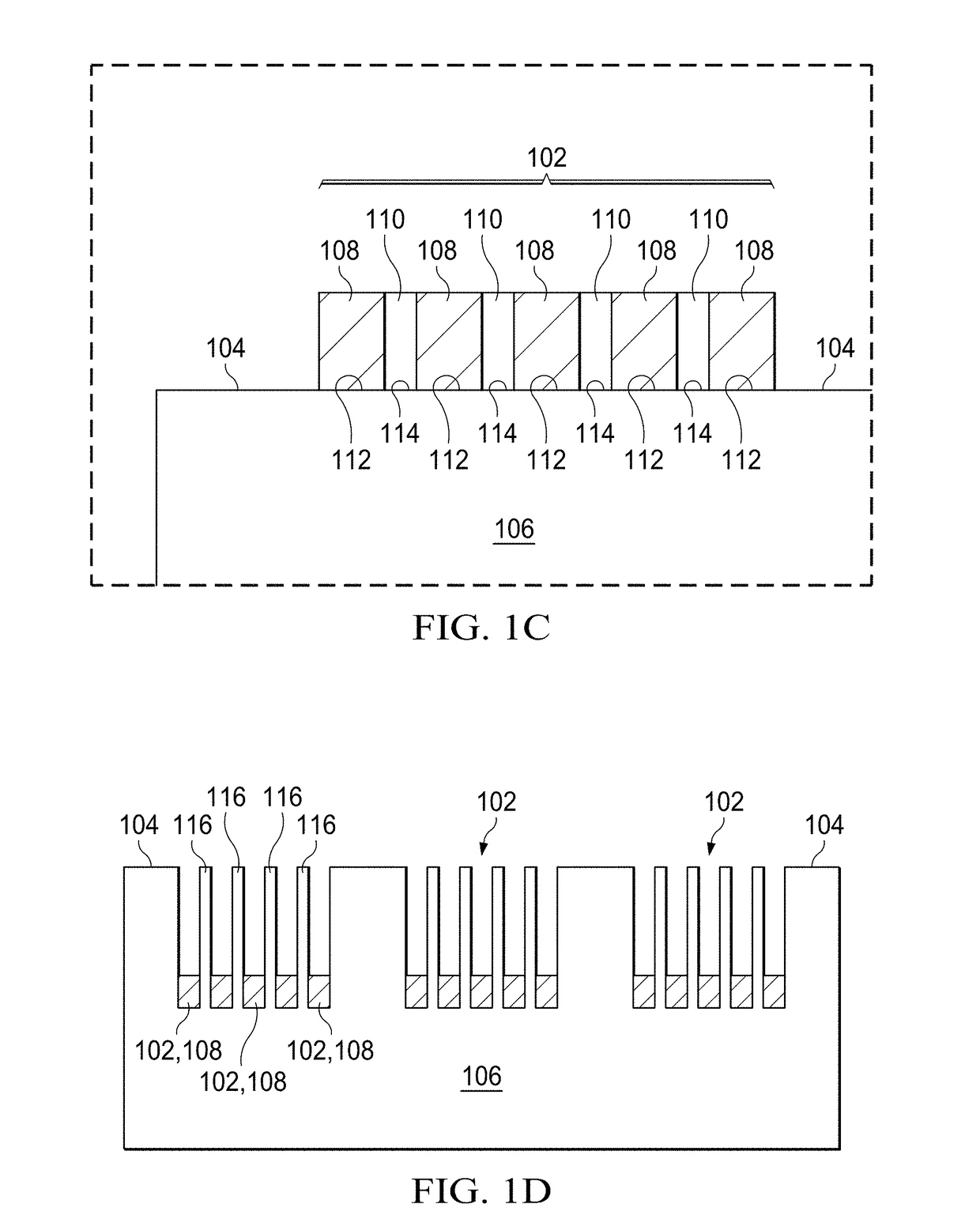Self-Anchored Catalyst Metal-Assisted Chemical Etching
a self-anchored catalyst and chemical etching technology, which is applied in the field of wet etching, can solve the problems of affecting the performance of the device, so as to inhibit the detour or delamination of discrete metal features
- Summary
- Abstract
- Description
- Claims
- Application Information
AI Technical Summary
Benefits of technology
Problems solved by technology
Method used
Image
Examples
examples
SAC-MacEtch Across Interfaces
[0038]The application of SAC-MacEtch to a semiconductor substrate including at least one interface is described in the following examples.
[0039]In the first example, the semiconductor substrate includes 2 μm-thick polysilicon over silicon oxide on boron-doped p-type (100)-oriented crystalline silicon having a resistivity of 1-50 Ω•cm, and thus the semiconductor structure includes two interfaces. The semiconductor substrate is first subjected to standard RCA cleaning processes, including organic contaminant removal in 1:1:5 ammonium hydroxide (NH4OH): hydrogen peroxide (H2O2): deionized water (DI) at 80° C., native oxide stripe in 1:10 buffer oxide etchant (BOE), and ionic contaminant removal in 1:1 hydrogen chloride (HCl): deionized water (DI).
[0040]After cleaning the semiconductor substrate, a polymer coating is deposited and lithographically patterned. The polymer coating (80 nm in thickness) is formed by spin coating 950 poly methyl methacrylate (PMMA...
PUM
| Property | Measurement | Unit |
|---|---|---|
| diameter | aaaaa | aaaaa |
| diameter | aaaaa | aaaaa |
| diameter | aaaaa | aaaaa |
Abstract
Description
Claims
Application Information
 Login to View More
Login to View More - R&D
- Intellectual Property
- Life Sciences
- Materials
- Tech Scout
- Unparalleled Data Quality
- Higher Quality Content
- 60% Fewer Hallucinations
Browse by: Latest US Patents, China's latest patents, Technical Efficacy Thesaurus, Application Domain, Technology Topic, Popular Technical Reports.
© 2025 PatSnap. All rights reserved.Legal|Privacy policy|Modern Slavery Act Transparency Statement|Sitemap|About US| Contact US: help@patsnap.com



